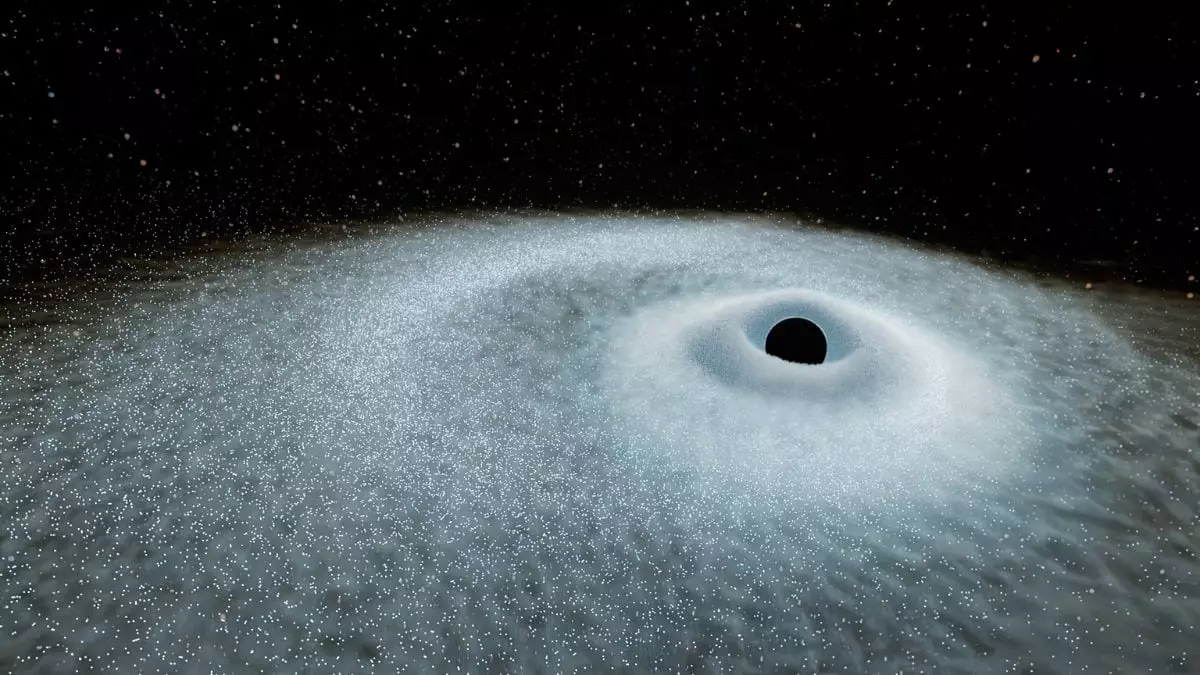The universe is a vast expanse of wonders, teeming with phenomena that continuously challenge our understanding of physics and celestial dynamics. Among these, the recent identification of Extreme Nuclear Transients (ENTs) delivers a seismic shift in our cosmic narrative. These rare events resemble the universe’s most ferocious fireworks, occurring when massive stars, over three times the mass of our Sun, are violently consumed by supermassive black holes. The explosive brightness of these eruptions eclipses typical tidal disruption events, presenting a truly earth-shattering revelation for scientists reflecting on black hole behavior and energy dynamics in extreme cosmic conditions.
Breaking the Silence of the Cosmos
Imagine the moment when astronomers first detected the unmistakable signatures of these ENTs — a phenomenon so powerful it compels scientists to revise long-standing paradigms about our universe. The flares spotted between 2016 and 2018 by the European Space Agency’s Gaia spacecraft illuminated the darkness of galactic centers with nearly ten times more intensity than any previously documented event. As if shedding light into the abyss, these observations provide a lens to examine the appetite of supermassive black holes throughout history. The intensity of these eruptions, over 100 times that of traditional supernova explosions, symbolizes nature’s untamed energy and poses profound questions about the interconnectedness of cosmic entities.
Challenging Established Astrophysics
Scientific discovery rarely occurs in a vacuum, yet the unveiling of ENTs is igniting new debates among astrophysicists. As Benjamin Shappee, a co-author of the research, aptly noted, “These flares are shining a light on the growth of supermassive black holes in the universe.” Such insights grant astronomers powerful tools for examining the evolution of galactic bulges and black hole feeding patterns over the eons. However, with this new knowledge comes the nagging uncertainty that often accompanies revolutionary findings. While we have initiated our exploration into ENTs, the journey toward understanding the intricate dances between black holes and stars is only beginning; the complexity of these relationships remains largely uncharted.
The Promise of Future Exploration
The road forward is both exhilarating and daunting. With the impending arrival of advanced observational technologies, we stand on the precipice of a new era in astrophysics. The potential for detecting more ENTs heightens scientific intrigue and amplifies the urgency to decode these phenomena further. As researchers continue their pursuit, the implications of this discovery transcend mere academic interest; they embed themselves into the very fabric of cosmology, promising to reshape our generational understanding of the universe.
In a decade where scientific progress often feels overshadowed by societal and political struggles, the discovery of ENTs reminds us of the awe-inspiring expanses of knowledge still waiting to be mined. It beckons us to broaden our horizons, pushing past conventional boundaries to embrace the mysteries that lie beyond our planet. The universe is a wild realm where chaotic beauty thrives, and in shedding light on these explosive events, humanity reaffirms its eternal quest to comprehend the seemingly incomprehensible.


Leave a Reply